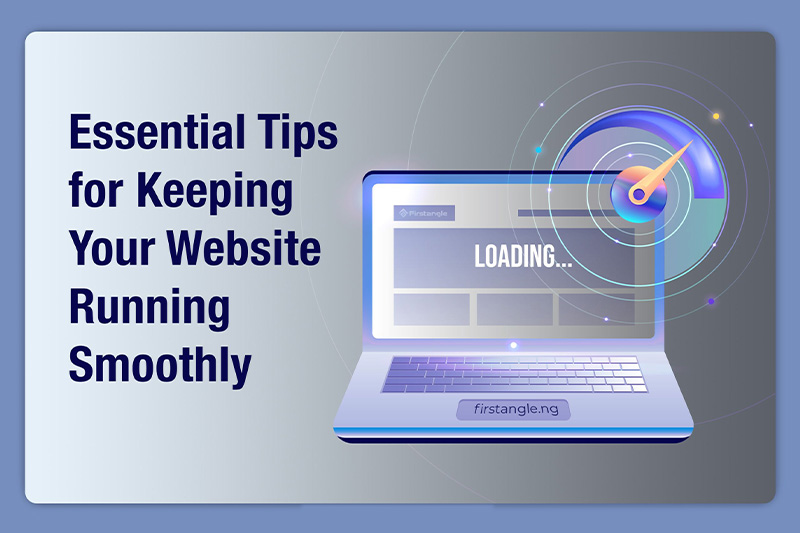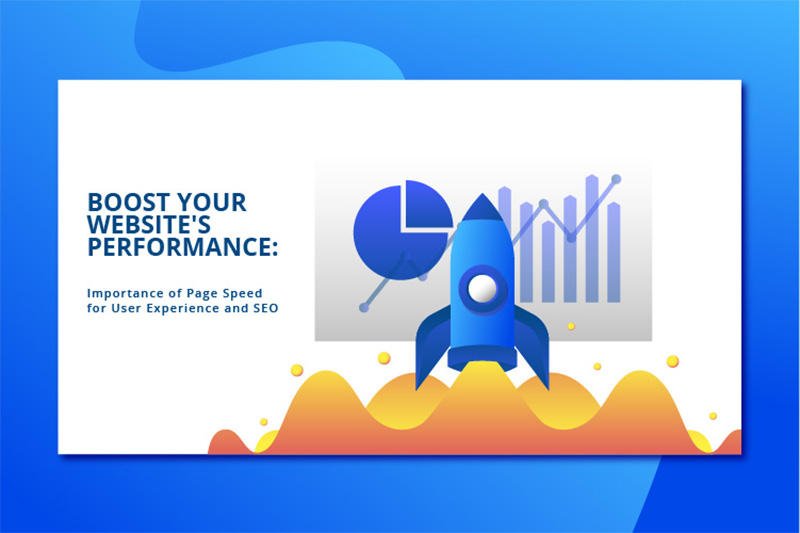Why Branding Is More Than Just a Logo in Nigeria

In a case study why branding is more than just a logo in Nigeria, many businesses make the mistake of thinking that branding begins and ends with a logo. But your logo is just the tip of the iceberg—real branding is about the entire experience your customers have with your company. Here’s why branding goes far beyond a visual mark, and how to build a brand that truly connects with your audience. 1. Branding Is Your Story A logo doesn’t tell people who you are, what you stand for, or why they should care. Your brand is:Your mission – Why does your company exist?Your values – What principles guide your decisions?Your personality – Are you professional, playful, or rebellious? Example: Apple isn’t just a bitten apple—it’s innovation, simplicity, and thinking differently. 2. Branding Is Emotional Connection People don’t buy products—they buy feelings, trust, and identity. Nike = Empowerment (“Just Do It”)Coca-Cola = Happiness (“Open Happiness”)Tesla = Futuristic vision A logo alone can’t create this bond—your messaging, tone, and customer experience do. 3. Branding Is Consistency Across Every Touchpoint Your brand must be recognizable and cohesive everywhere: Without consistency, your brand feels fragmented and unreliable. 4. Branding Is Customer Experience (CX) A beautiful logo means nothing if: Your brand is the sum of every interaction a customer has with you. 5. Branding Is Differentiation In a crowded market, a logo alone won’t make you stand out. You need: Example: Dollar Shave Club disrupted an industry with humor and personality—not just a logo. 6. Branding Is Trust & Credibility A strong brand: A logo can’t do this—only a well-crafted brand can. 7. Branding Evolves Over Time Logos get updates, but brands grow and adapt.Google’s logo has changed, but its mission (“Organize the world’s information”) remains. Starbucks removed its name from its logo because the brand became iconic enough to stand alone. Your brand should be flexible enough to grow with your business. How to Build a Strong Brand (Beyond the Logo)1️⃣ Define your core identity (mission, values, personality).2️⃣ Develop a visual & verbal language (colors, fonts, tone of voice).3️⃣ Deliver a seamless customer experience (online, in-store, support).4️⃣ Be consistent but adaptable—evolve without losing your essence. Need Help Building a Brand That Stands Out?At Firstangle Nigeria, we don’t just design logos—we craft full brand identities that resonate with your audience. 📞 09047705991 Lets talk about your brand strategy.
How to Choose the Right Digital Agency for Your Brand

A good digital agency can be a game-changer for your brand—whether you need a website transformation, a social media killer campaign, or a full digital transformation. But with hundreds of agencies to choose from, how do you pick the right one?
The Future of Web Design: Top Trends to Watch in 2025/2026

The digital landscape is evolving faster than ever, and web design is at the forefront of this transformation. As user expectations rise and technology advances, staying ahead of design trends is crucial for creating engaging, high-performing websites. Here are the top web design trends shaping the future—and how they can elevate your brand’s online presence. 1. AI-Powered Personalization AI is no longer just a buzzword—it’s revolutionizing how websites adapt to users in real time. Expect to see: Why it matters: Personalization boosts engagement and conversions by making users feel understood. 2. Immersive 3D & Interactive Elements Flat designs are giving way to rich, interactive experiences: Best for: Brands looking to create a memorable, cutting-edge experience. 3. Dark Mode & Aesthetic Minimalism Dark mode isn’t just easier on the eyes—it’s becoming a design standard. Paired with minimalist layouts, it offers: Pro Tip: Always provide a dark/light mode toggle for accessibility. 4. Voice User Interface (VUI) Optimization With smart speakers and voice search on the rise, websites must adapt: Why it’s growing: Over 50% of searches will be voice-based by 2025 (Comscore). 5. Sustainability in Web Design Eco-conscious design is gaining traction with: Key Benefit: Aligns with corporate sustainability goals while improving performance. 6. Brutalism & Experimental Layouts Breaking away from traditional designs, some brands are embracing: Who’s using it? Creative agencies, tech startups, and brands wanting to stand out. 7. Supercharged Micro-Interactions Small animations that enhance UX, such as: Why they work: They make interactions feel more human and engaging. 8. Accessibility as a Standard (Not an Afterthought) With stricter regulations (like WCAG 3.0), accessible design is a must: Stat: Over 1 billion people live with disabilities—ignoring accessibility means losing potential customers. Staying Ahead in Web Design The future of web design blends technology, creativity, and user-centric thinking. Whether it’s AI-driven personalization, immersive 3D elements, or sustainable practices, the key is to balance innovation with usability. Ready to future-proof your website? [Our agency] specializes in cutting-edge web design that converts. [Let’s talk!] Want this tailored to your industry? We can analyze how these trends apply to your business—get in touch for a free web audit. 🚀
Innovative Ideas to Enhance Your Branding Image

A brand’s image is the perception it instills in consumers and stakeholders, encompassing personality, values, and visual identity. Establishing a positive branding image yields numerous benefits, including increased loyalty, higher sales, differentiation from competitors, enhanced reputation, and improved employee engagement. This article explores the importance of actively managing and cultivating a brand image for enduring success and growth. Barriers to Brand Enhancement Building a strong brand image faces obstacles such as a lack of clear brand identity, failure to connect emotionally, neglecting user-generated content, and one-way messaging. Overcoming these barriers is crucial for effective brand management and enhancement. Strategies to Overcome Barriers Innovative Brand Enhancement Strategies Leveraging Social Media for Brand Image Enhancement Storytelling for Emotional Connections Influencer Partnerships for Brand Image Enhancement Leveraging User-Generated Content Leveraging Experiential Brand Marketing Measuring Brand Image Enhancement Consistent Measurement for Real Growth Regularly track metrics such as brand awareness, sentiment, NPS, and customer retention to evaluate the success of brand enhancement efforts. By analyzing these metrics, brands gain insights into the return on investment and can refine strategies for ongoing improvement, fostering real business growth.
Conquer the Digital Age: Essential Elements of a Successful Business Website

In today’s digital world, your website is your storefront. It’s the first impression potential customers will have of your business, and it needs to be impactful. But what makes a website truly successful? At Firstangle Digital Agency, we specialize in crafting websites that convert, and we’re here to share the essential elements you need to consider. 1. Clear and Concise Branding: Your website should be an extension of your brand identity. A cohesive visual style, clear brand messaging, and consistent use of your logo and colors all contribute to a professional and trustworthy first impression. 2. User-Friendly Navigation: Imagine walking into a store where you can’t find anything. That’s what a website with poor navigation feels like. A clear and intuitive menu structure, along with a logical site hierarchy, is crucial for a positive user experience. Visitors should be able to find the information they need quickly and effortlessly. Organize your content logically, with clear menus and navigation bars to guide users through your site effortlessly. 3. Mobile Responsiveness: The number of people browsing on smartphones and tablets continues to grow. A website that’s not mobile-friendly will alienate a significant portion of your potential audience. Your website should adapt seamlessly to any device, ensuring a smooth user experience across all platforms, providing a consistent user experience regardless of how visitors access your site. 4. High-Quality Content: Content is king! Informative, engaging, and well-written content is essential for capturing and retaining visitors’ attention. Your website content should be informative, relevant, and visually appealing. Invest in creating high-quality content that resonates with your target audience and positions your brand as an authority in your industry. 5. Strong Call-to-Action Buttons (CTAs): Don’t leave your visitors guessing what to do next! Clear and compelling CTAs tell users exactly what action you want them to take, whether it’s contacting you, subscribing to your newsletter, or making a purchase. CTAs should be clear, compelling, and prominently displayed throughout your website to encourage conversions. 6. Fast Loading Speed: Nobody likes waiting for a website to load. In fact, slow loading times can lead to frustrated visitors abandoning your site altogether resulting in high bounce rates and lost opportunities. Optimize your website for speed by using efficient code, compressing images, considering a reliable hosting provider, and utilizing content delivery networks (CDNs) to ensure swift page load times. 7. SEO Optimization: Search Engine Optimization (SEO) helps your website rank higher in search engine results pages (SERPs). By incorporating relevant keywords, optimizing page titles and meta descriptions, and building backlinks, you can increase your website’s organic visibility and attract potential customers searching for your products or services. Additionally, ensure your site’s structure and coding are optimized for search engine crawlers to index your pages effectively. 8. Secure Payment Options: If your website facilitates e-commerce transactions, providing a secure and user-friendly payment gateway is essential. Implement SSL encryption to protect sensitive customer data and offer secure payment gateways to instill trust and confidence in your online transactions. A secure website not only protects your customers but also enhances your brand’s credibility. 9. Regular Updates and Maintenance: Your website is a living document. Maintaining a successful website is an ongoing process. Regularly update your content, fix any broken links or errors, and stay abreast of emerging web design trends and technologies. By keeping your website fresh and up-to-date, you demonstrate your commitment to providing a valuable user experience and staying ahead of the competition. Firstangle Digital Agency Can Help You Build Your Dream Website A successful business website is more than just a digital storefront – it’s a powerful tool for connecting with your audience, driving conversions, and propelling your brand forward. By incorporating these essential elements, you can create a website that not only looks great but also drives results. At Firstangle Digital Agency, our team of experienced web designers and developers can help you craft a website that reflects your brand, engages your audience, and achieves your business goals. Contact us today for a free consultation!
Essential Tips for Keeping Your Website Running Smoothly

Maintaining a website isn’t just about launching it and forgetting it. Regular upkeep is essential to ensure its smooth operation, optimal performance, and security. In this blog post, we’ll explore some indispensable tips for keeping your website running smoothly. 1. Regularly Update Software and Plugins: Outdated software and plugins are one of the leading causes of security vulnerabilities and performance issues. Make it a habit to regularly update your website’s content management system (CMS), plugins, and themes to the latest versions. This helps patch any security flaws, improve functionality, and ensure compatibility with the latest web standards. 2. Monitor Website Performance and Loading Speed: Site speed is crucial for user experience and search engine rankings. Utilize tools like Google PageSpeed Insights or GTmetrix to regularly monitor your website’s performance and loading speed. Address any issues identified, such as large image files, excessive HTTP requests, or server bottlenecks, to ensure optimal loading times. 3. Backup Your Website Regularly: Data loss can occur due to various reasons, including hacking, server failures, or human error. Implement a robust backup strategy to regularly back up your website files and databases. Store backups in secure off-site locations or utilize cloud-based backup solutions for added redundancy. 4. Secure Your Website with SSL Certificate: Protect your website and users’ data by securing it with an SSL (Secure Sockets Layer) certificate. SSL encryption encrypts data transmitted between the user’s browser and your website, preventing unauthorized access or tampering. Regularly confirm that your current SSL hasn’t expired. Additionally, Google prioritizes HTTPS websites in search results, enhancing your site’s visibility and trustworthiness. 5. Optimize Images and Content for Faster Loading Times: Large image files and bloated content can significantly slow down your website. Optimize images by compressing them without compromising quality (there are a lot of free online tools that can help you achieve this) and minify CSS, JavaScript, and HTML files to reduce file sizes. Additionally, utilize lazy loading techniques to defer off-screen images, improving initial page load times. 6. Check for Broken Links and Fix Them Promptly: Broken links not only frustrate visitors but also negatively impact your website’s SEO. Regularly scan your website for broken links using tools like Screaming Frog or Google Search Console. Once identified, promptly fix or redirect broken links to relevant pages to maintain a seamless user experience and preserve SEO authority. 7. Implement Security Measures to Prevent Hacking Attempts: Cybersecurity threats are on the rise, making website security a top priority. Implement robust security measures such as firewalls, malware scanners, and intrusion detection systems to protect your website from hacking attempts, malware infections, and DDoS attacks. Additionally, enforce strong password policies and limit access to sensitive areas of your website. 8. Seek Professional Help for Technical Issues or Updates: While DIY maintenance is commendable, some tasks require expertise and experience. Don’t hesitate to seek professional help for technical issues, complex updates, or troubleshooting. Web developers, system administrators, and SEO experts can provide valuable insights and support to keep your website running smoothly and this is our specialty at Firstangle Conclusion: Regular website maintenance is not just a good practice; it’s essential for the success of your online presence. By following these essential tips, you can ensure your website remains secure, performs optimally, and provides a seamless experience for your visitors. Invest time and effort into maintaining your website, and it will repay you with increased traffic, engagement, and conversions. Get in touch with us today if you need help creating or managing your website.
Importance of Website Page Speed for User Experience and SEO

In today’s digital landscape, where attention spans are shorter than ever, the speed at which a website loads can make or break user engagement and search engine visibility. Page speed, often overlooked in the grand scheme of website optimization, holds immense significance for both user experience (UX) and search engine optimization (SEO). In this blog post, we’ll delve into the importance of page speed and explore how it impacts both user satisfaction and SEO rankings. What is Page Speed? Page speed refers to the time it takes for a webpage to fully load its content, including text, images, scripts, and other elements. It is typically measured in seconds and plays a critical role in shaping user perceptions of a website’s performance. Page speed encompasses various metrics, including time to first byte (TTFB), first contentful paint (FCP), and time to interactive (TTI), each providing insights into different aspects of loading times. Impact on User Experience The significance of page speed in shaping user experience cannot be overstated. Studies have consistently shown that users expect websites to load quickly, with any delays leading to frustration and abandonment. A slow-loading website not only hampers user satisfaction but also increases bounce rates, as impatient visitors are quick to seek alternatives. In today’s fast-paced digital environment, where consumers have countless options at their fingertips, a seamless and rapid browsing experience is paramount to retaining audience engagement and loyalty. Impact on SEO Rankings In addition to its influence on user experience, page speed is a crucial factor in determining a website’s search engine rankings. Search engines like Google prioritize user-centric metrics, including page speed, when ranking websites in search results. Google’s algorithm considers page speed as a ranking factor, with faster-loading pages often receiving preferential treatment in search results. By prioritizing page speed optimization, website owners can improve their chances of ranking higher in search engine results pages (SERPs) and driving organic traffic to their sites. Factors Affecting Page Speed Several factors contribute to the speed at which a webpage loads, including: Tools to Measure Page Speed Several tools are available to measure and analyze page speed performance, including: Strategies to Improve Page Speed Optimizing page speed requires a multifaceted approach, incorporating various strategies such as: Case Studies of Successful Optimization Efforts Several businesses have successfully optimized their page speed, resulting in tangible improvements in user experience and SEO rankings. For example, a leading e-commerce retailer implemented image compression and browser caching, resulting in a 30% reduction in page load times and a 15% increase in conversions. Similarly, a news website improved its page speed by leveraging a CDN, leading to a 20% increase in organic traffic and a 10% boost in ad revenue. Conclusion: Prioritize Page Speed for Better UX and SEO Search engine rankings and user experience are significantly influenced by page speed. Website owners may increase customer happiness, lower bounce rates, and increase their chances of ranking better in search results by giving page speed optimization top priority. The rising need for rapid satisfaction and the widespread use of mobile devices make investment in page speed optimization essential for success in today’s digital environment. So, boost the functionality of your website and see how it helps you become more visible and successful online.

